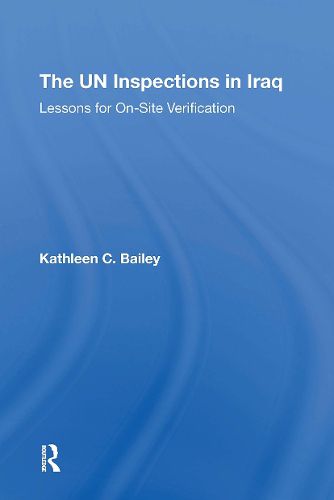Readings Newsletter
Become a Readings Member to make your shopping experience even easier.
Sign in or sign up for free!
You’re not far away from qualifying for FREE standard shipping within Australia
You’ve qualified for FREE standard shipping within Australia
The cart is loading…






This book describes the problems encountered by UN inspection teams assigned to find and destroy Iraq's nuclear, chemical, biological, and missile capabilities following Desert Storm. Kathleen C. Bailey focuses on the initial inspections-the period in which Iraq was struggling to camouflage and conceal its weapons and production equipment as inspectors were trying to define their role in the process. Working from interviews with these initial inspectors, Bailey extracts important lessons for future verification efforts. On-site arms control inspectors in Iraq found information to be carefully controlled by the government. Pertinent documentation was destroyed, only selected people were allowed to interact with inspectors, and officials refused to make full, complete declarations. Buildings were tom down, equipment was moved, and un-exploded ordnance was placed in the way. These and other techniques helped Iraq to hide its past activities and to preserve some of its weapons capabilities. In the future, arms control inspectors will need to develop strategies for dealing more effectively with recalcitrant inspectees and for creating the best possible procedures and processes. Bailey concludes with concrete suggestions for overcoming some of these obstacles with more effective inspection practices.
$9.00 standard shipping within Australia
FREE standard shipping within Australia for orders over $100.00
Express & International shipping calculated at checkout
This book describes the problems encountered by UN inspection teams assigned to find and destroy Iraq's nuclear, chemical, biological, and missile capabilities following Desert Storm. Kathleen C. Bailey focuses on the initial inspections-the period in which Iraq was struggling to camouflage and conceal its weapons and production equipment as inspectors were trying to define their role in the process. Working from interviews with these initial inspectors, Bailey extracts important lessons for future verification efforts. On-site arms control inspectors in Iraq found information to be carefully controlled by the government. Pertinent documentation was destroyed, only selected people were allowed to interact with inspectors, and officials refused to make full, complete declarations. Buildings were tom down, equipment was moved, and un-exploded ordnance was placed in the way. These and other techniques helped Iraq to hide its past activities and to preserve some of its weapons capabilities. In the future, arms control inspectors will need to develop strategies for dealing more effectively with recalcitrant inspectees and for creating the best possible procedures and processes. Bailey concludes with concrete suggestions for overcoming some of these obstacles with more effective inspection practices.